How to Check Your Hardware Revision
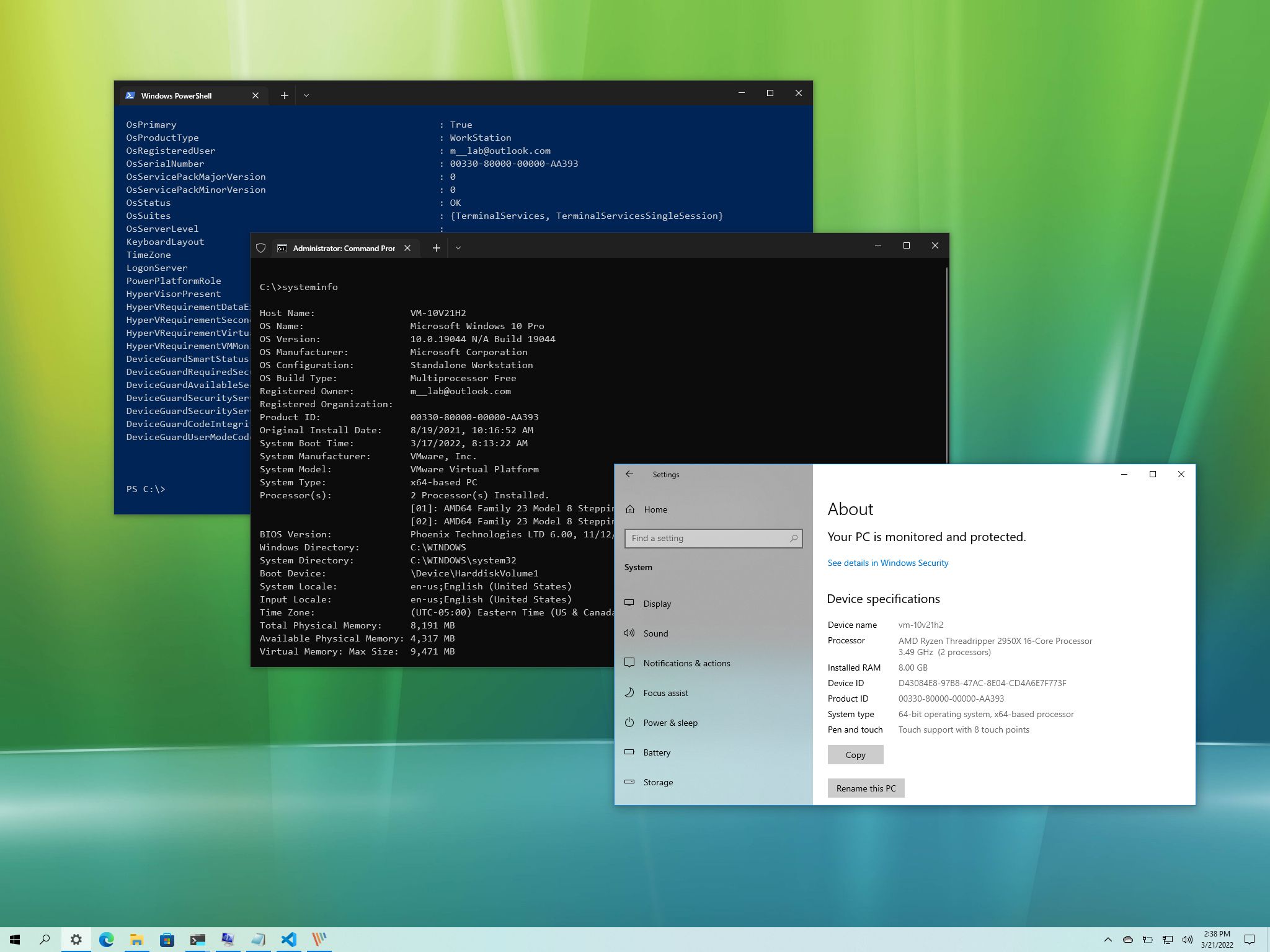 Source: Windows Central
Source: Windows Central
On Windows 10, the ability to determine the technical specifications of your computer can come in handy in many situations. It can exist helpful to decide whether the device meets the requirements to install an awarding or upgrade to a new version. If the desktop or laptop isn't working, the specs can help troubleshoot the problem. Or, when you notice the reckoner slowing down over time, you can bank check the hardware specifications to confirm whether you accept to upgrade a component or it's time to get a new automobile.
Whatever the reason it might be, Windows ten has many means to check the device specs (such as CPU, RAM, motherboard, video card, Basic Input/Output Organisation (BIOS) or Unified Extensible Firmware Interface (UEFI), device model number, drivers, updates details, and Windows version), using desktop utilities or control tools. The merely caveat is that the backdrop bachelor could be slightly different depending on the method.
In this Windows 10 guide, nosotros will walk you lot through the steps to bank check your device's consummate hardware and software specifications.
- How to find computer specs using Settings
- How to notice estimator specs using System Data
- How to discover calculator specs using DirectX Diagnostic Tool
- How to find figurer specs using PowerShell
- How to observe computer specs using Command Prompt
How to find calculator hardware specs using Settings
The "Virtually" page includes the basic system specifications, such as processor, memory, and Windows installation details.
To check the calculator tech specs with the Settings app, use these steps:
- Open Settings.
- Click on System.
- Click on About.
-
Under the Device specifications section, cheque the processor, system memory (RAM), architecture (32-chip or 64-bit), and pen and touch support.
 Source: Windows Key
Source: Windows Key - Nether the Windows specifications section, check the software specifications:
- Edition — Shows whether this is a Windows 10 Pro or Windows 10 Dwelling house installation.
- Version — Reveals the Windows release currently on the computer, and the version changes every twelvemonth after a feature update.
- Installed on — States the appointment when the last feature update was installed.
- OS build — Indicates the build number of the release. The beginning five numbers represent the version, and anything after the catamenia represents the latest quality update.
-
Feel — Reveals the service feature pack version installed on the device.
 Source: Windows Primal
Source: Windows Primal
One time you lot complete the steps, y'all will understand the computer's basic technical specifications.
While on the "Nigh" page, you can as well click the Re-create push button under each section to copy and share the specifications with other people, save for hereafter reference or inventory.

1. ExpressVPN: The best VPN available right now
This is our top pick for anyone looking to go started with a VPN. It offers a dandy mix of speed, reliability, outstanding customer service, and affordability. There is a 30-day money-dorsum guarantee, so give information technology a shot today.
From $6.67 per month at ExpressVPN
How to find calculator specs using System Data
The System Information app on Windows 10 is one of the all-time options to view a complete overview of the computer'due south technical specifications.
To view all the hardware specs of the figurer, employ these steps:
- Open up Start.
- Search for msinfo32 and click the top consequence to open the System Data app.
-
Select the System Summary category from the left navigation pane.
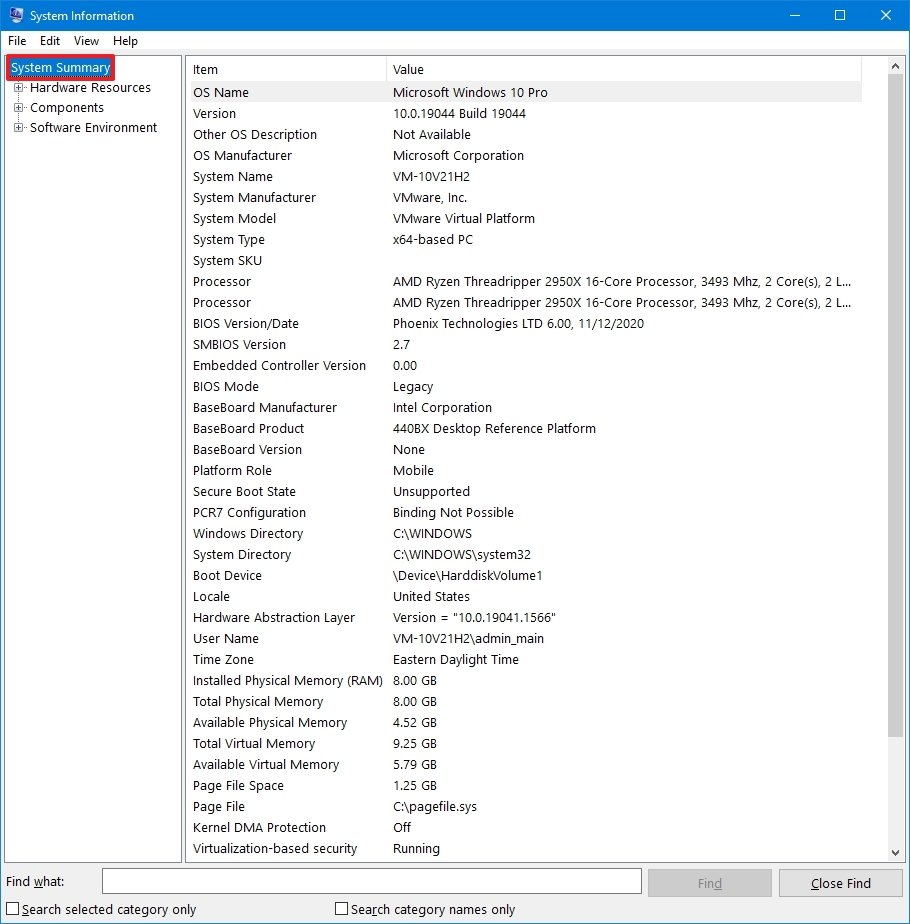 Source: Windows Primal
Source: Windows Primal - Ostend the computer specs on the right side, including system model and blazon, processor brand and model, UEFI (or legacy BIOS) version and other details, system retentiveness capacity, motherboard make and model, and virtualization support.
- (Optional) Expand the Components co-operative.
-
Click on Display to view the graphics card technical data.
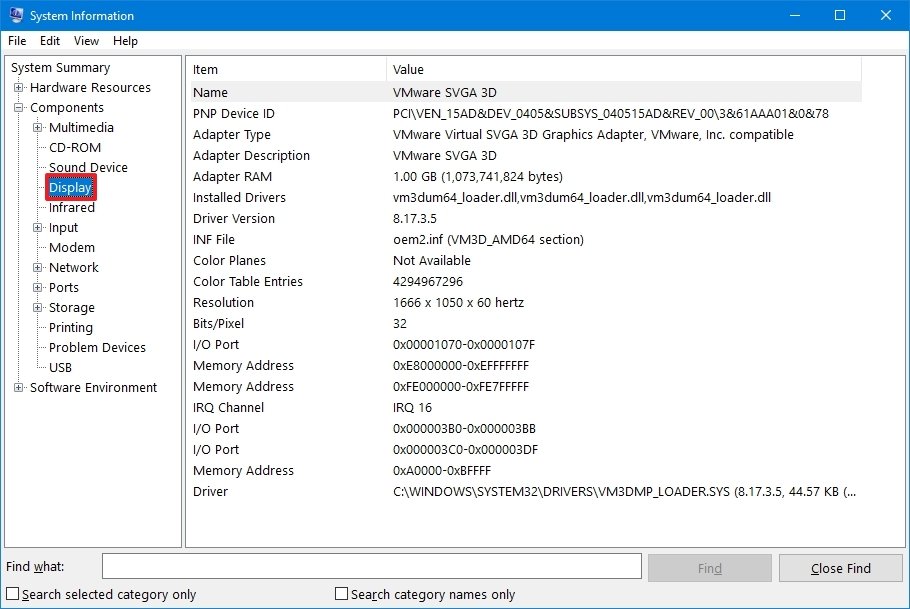 Source: Windows Central
Source: Windows Central
Later y'all consummate the steps, you will have a detailed overview of the laptop or desktop specs.
In addition, at the bottom of the page, you volition find a search box to find the information y'all demand quickly. The only caveat is that you demand to exist exact with the queries to get the data you want.
Create hardware specs report
System Information also has an option to create a study with the hardware and software specifications, which you lot can save for future reference, inventory, or share with technical support.
To create a written report with the system specifications on Windows 10, utilize these steps:
- Open Start.
- Search for msinfo32 and click the top upshot to open the System Information app.
-
Select the specifications to export from the left navigation pane.
Quick tip: Selecting System Summary volition export everything. However, if you lot only need to export the graphics card details, you only demand to select the Display detail.
- Click on the File menu.
-
Click the Consign choice.
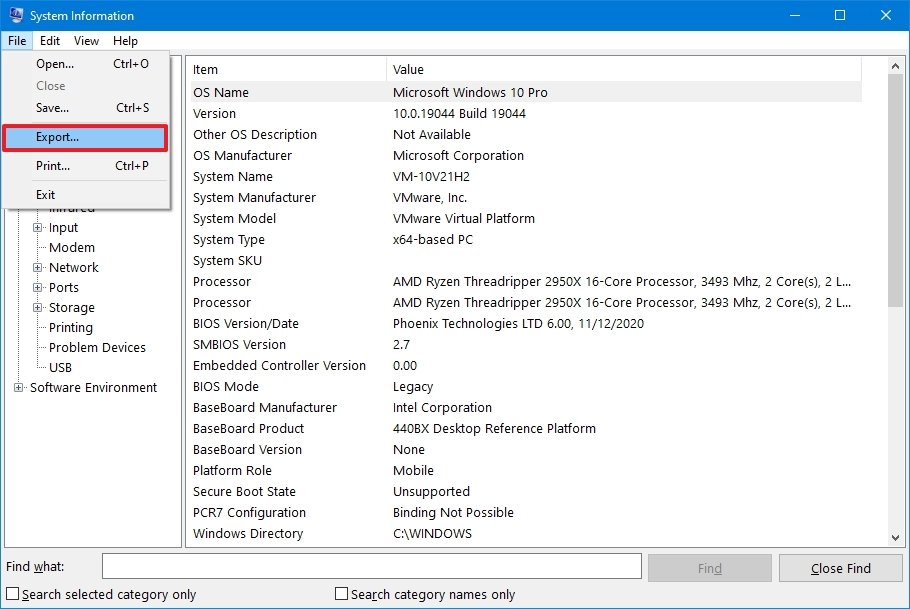 Source: Windows Central
Source: Windows Central - Select the folder to export the file.
- Confirm a descriptive name for the report — for example, "Windows 10 Hardware Specifications".
- Click the Salvage button.
- Open up File Explorer.
- Open the folder containing the exported data.
-
Correct-click the text file and select the open option to view the exported organization information.
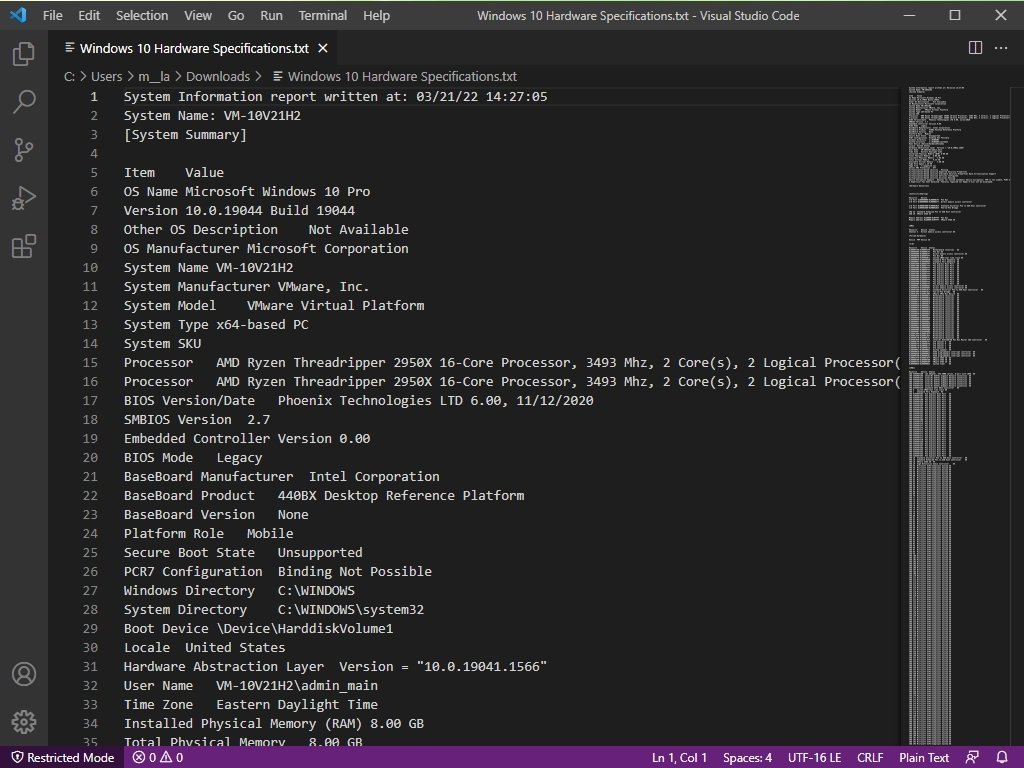 Source: Windows Central
Source: Windows Central
After you lot complete the steps, the specifications volition consign into a text file, which you can then open with whatsoever text editor.
How to find computer specs using DirectX Diagnostic Tool
Windows 10 likewise includes the DirectX Diagnostic Tool (dxdiag) to view information about DirectX audio and video support, which you tin can apply to troubleshoot dissimilar system issues. Withal, y'all can also apply it to determine many tech specs virtually the machine, like the information available through the "About" settings folio.
To check your Windows x calculator specs with the DirectX Diagnostic Tool, utilise these steps:
- Open up Outset.
- Search for dxdiag and click the top result to open the DirectX Diagnostic Tool.
- Click on the System tab.
-
Under the "Arrangement information" section, cheque the estimator tech specs, including processor, memory, BIOS or UEFI version, system model and manufacturer, Windows 10 version and edition, etc.
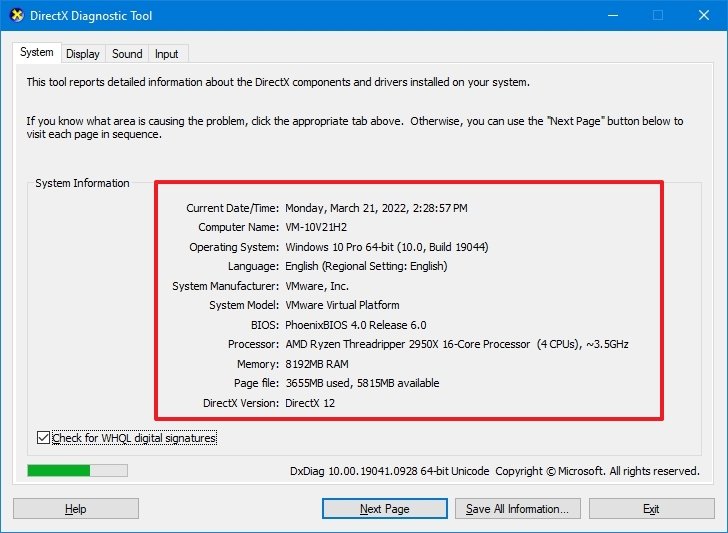 Source: Windows Central
Source: Windows Central - Click the Brandish tab.
-
Nether the "Device" section, determine the graphics card specifications like name and manufacturer, graphics memory, and brandish details.
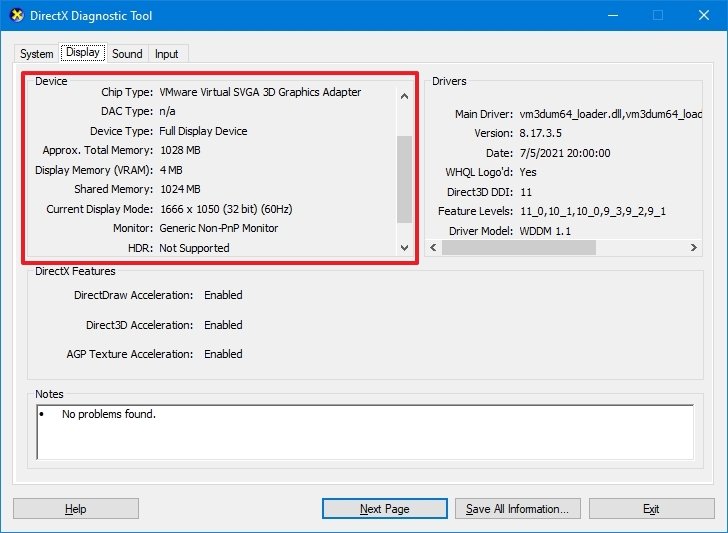 Source: Windows Central
Source: Windows Central -
(Optional) Click the Save All Information button.
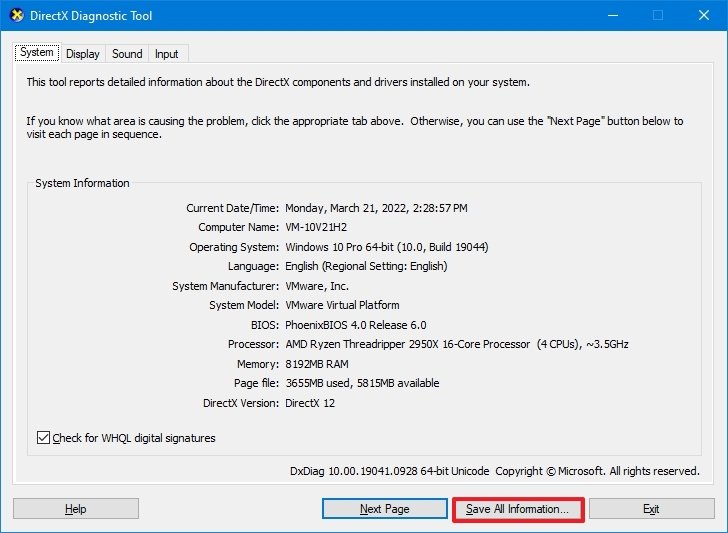 Source: Windows Cardinal
Source: Windows Cardinal - Select the binder destination.
- Confirm a descriptive name for the report — for instance, "Windows 10 Hardware Specifications."
- Click the Relieve button.
- Open File Explorer.
- Open the folder containing the exported data.
-
Correct-click the text file and select the open selection to view the exported information.
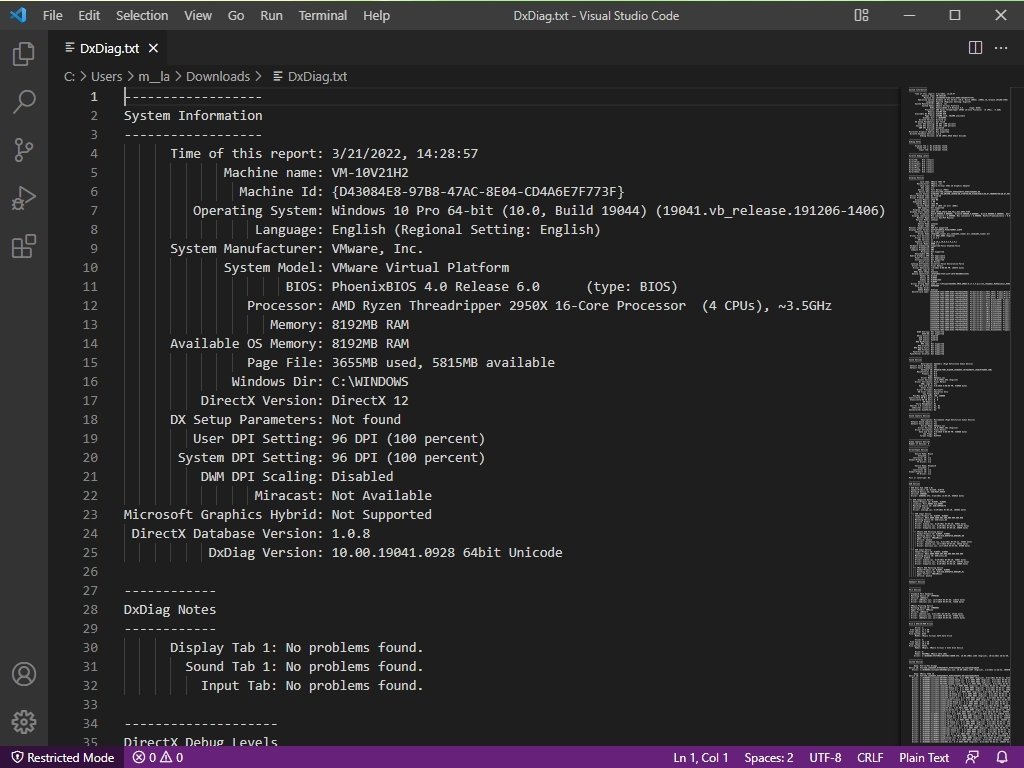 Source: Windows Central
Source: Windows Central
Once you lot complete the steps, you can open the text file to review the computer hardware and software details.
How to find computer specs using PowerShell
You lot can also use PowerShell to observe out the technical specifications of your computer.
To utilize PowerShell to check the computer tech specs on Windows 10, use these steps:
- Open Showtime.
- Search for PowerShell, right-click the top result, and select the Run as administrator pick.
-
Type the following command to decide the figurer specs and press Enter:
Get-ComputerInfo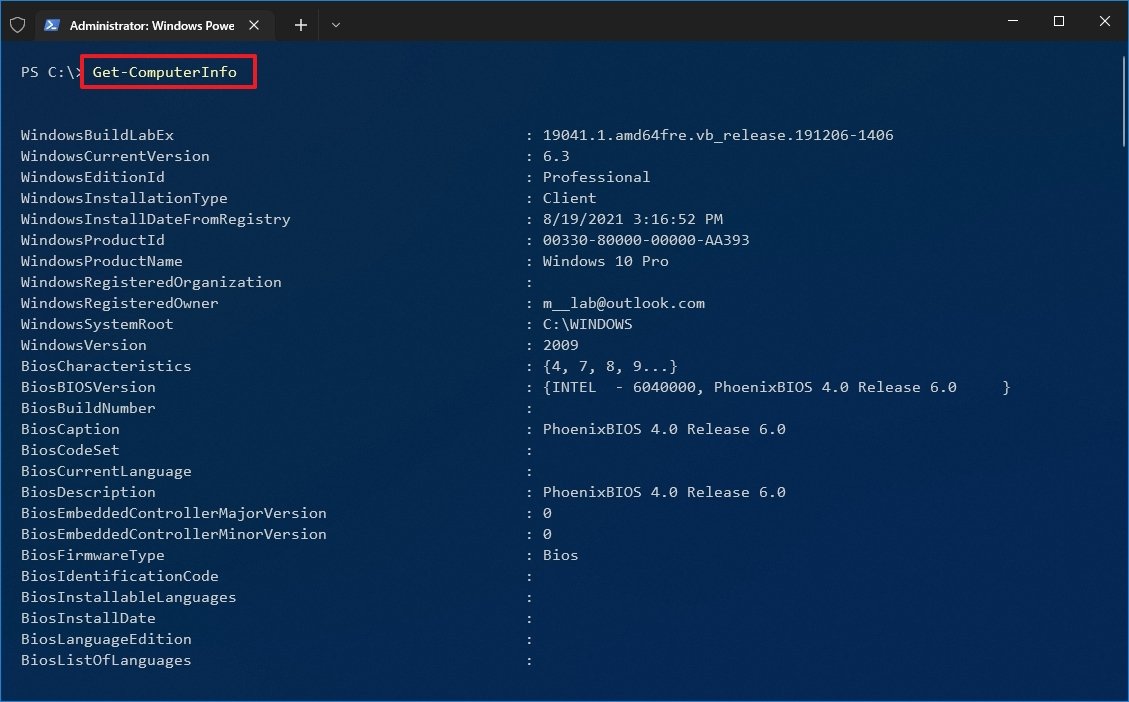 Source: Windows Central
Source: Windows Central -
(Optional) Blazon the following command to view only the details of a specific component and press Enter:
Go-ComputerInfo -Holding "PROPERTY-Proper noun"In the command, change PROPERTIES-Proper noun for the details yous want to review.
Thi example shows everything regarding the BIOS data:
Get-ComputerInfo -Holding "bios*"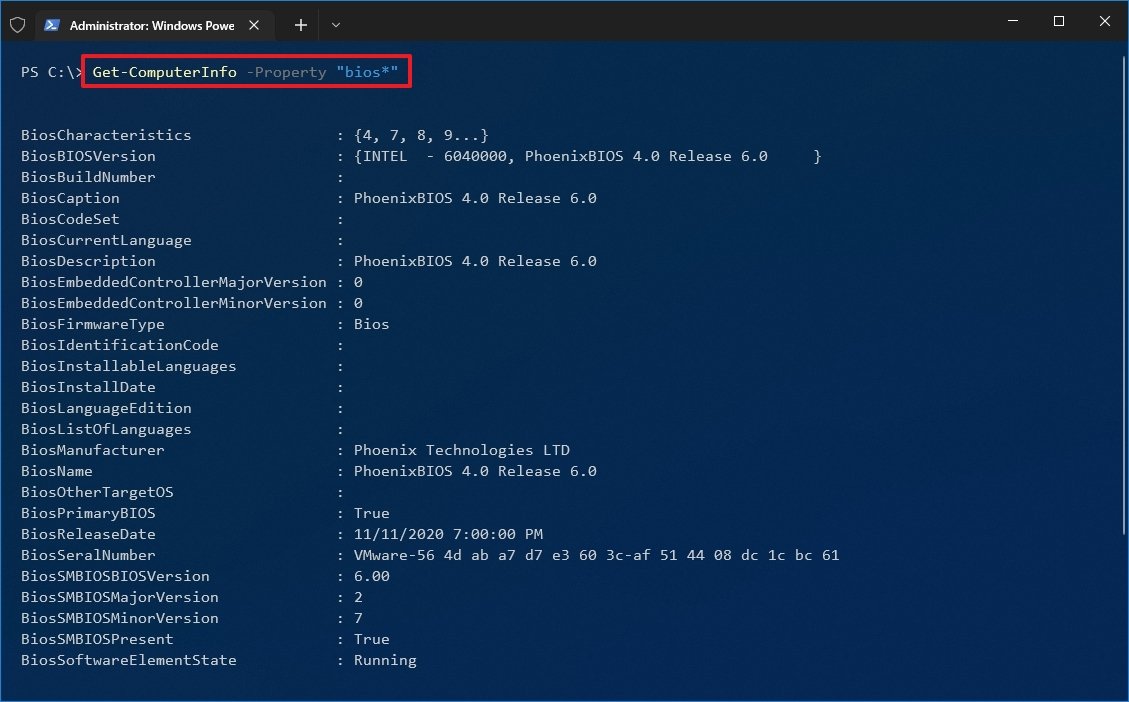 Source: Windows Central
Source: Windows Central Quick notation: The asterisk
*in the command is a wildcard to match every property that starts with BIOS.
Subsequently you complete the steps, PowerShell will display a total list of Windows 10 and hardware data or the specific property yous requested in the control.
How to detect computer specs using Control Prompt
Alternatively, Control Prompt can likewise show y'all the computer specs using the control to employ the System Information (systeminfo), which allows you to view even more hardware and software details than the graphical version of the app.
To observe the computer specs with Command Prompt on Windows 10, utilise these steps:
- Open Start.
- Search for Command Prompt, right-click the summit result, and select the Run every bit administrator pick.
-
Blazon the following command to find the device specs and press Enter:
systeminfo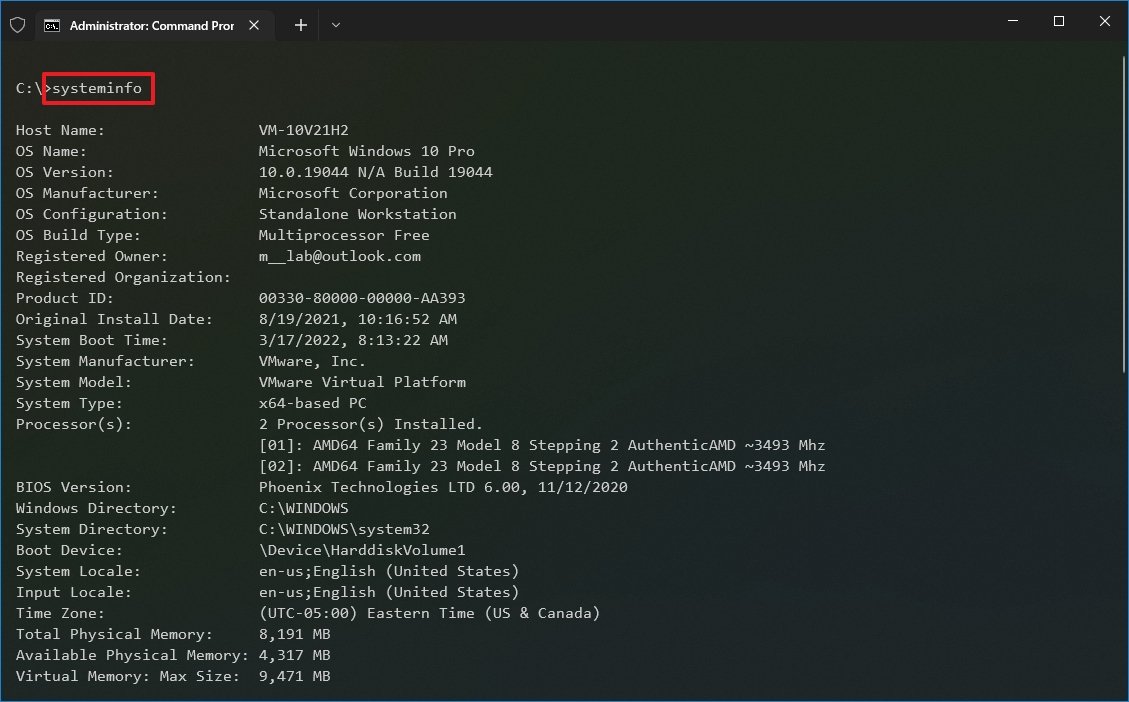 Source: Windows Central
Source: Windows Central Quick tip: Utilize the
systeminfo /?command to see the available options using this tool in Command Prompt.
Once you consummate the steps, the command output will show you the computer's hardware and software information, including Windows 10 and update information, organisation architecture, organisation memory, and network details. You volition besides be able to come across whether the desktop or laptop uses BIOS or UEFI.
To relieve the output from PowerShell or Command Prompt commands to a text file, you can use these instructions.
More Windows resource
For more than helpful articles, coverage, and answers to common questions about Windows x and Windows 11, visit the following resource:
- Windows 11 on Windows Central — All you need to know
- Windows 11 assist, tips, and tricks
- Windows ten on Windows Central — All you need to know
We may earn a commission for purchases using our links. Learn more than.

The boxing begins
Intel Arc GPUs for laptops are here: Here's what you demand to know
Intel today is finally taking the wraps off its first discrete series of GPUs in a very long time. Intel Arc A-serial of GPUs, including Arc iii, five, and seven versions, start aircraft this spring and throughout the summer in new laptops. Here are all the details and what to look.













Comments
Post a Comment